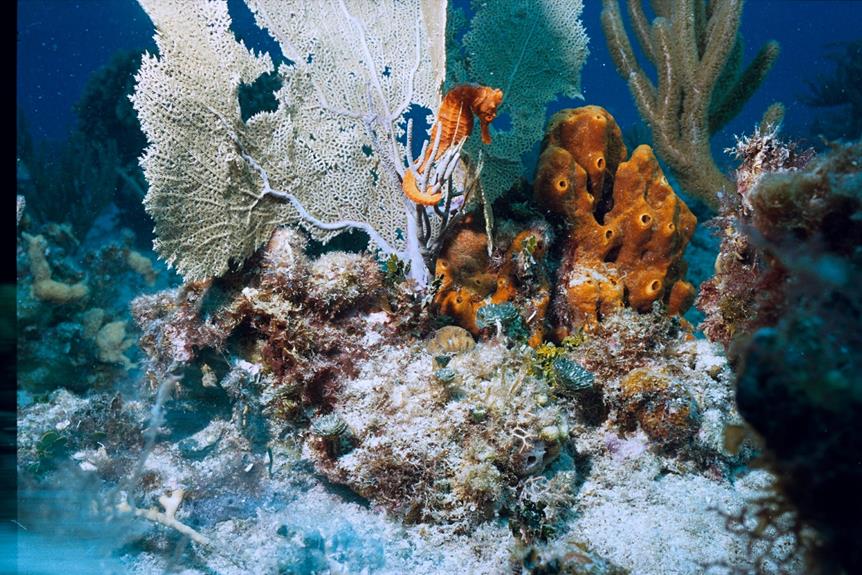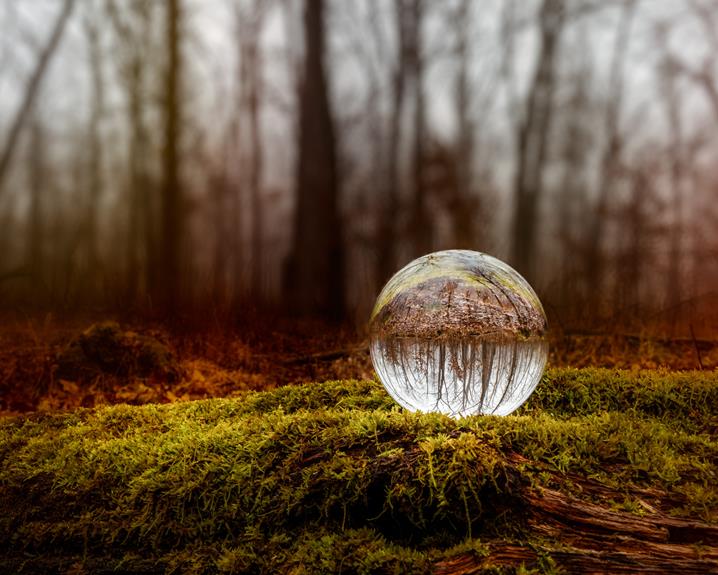Navigating the intricate world of hard water aquarium plants demands a judicious selection process that aligns with the unique requirements posed by mineral-rich aquatic environments.
As aquarists strive to curate lush greenery within their tanks, the quest for resilient and adaptable flora becomes a pivotal pursuit.
From the stalwart Anubias to the versatile Java Fern and the enchanting Java Moss, each plant species offers distinct advantages in thriving amidst elevated mineral levels.
However, the realm of hard water aquascaping harbors more hidden gems waiting to be uncovered, promising both aesthetic allure and sustainable plant growth.
Key Takeaways
- Anubias and Java fern are hardy plants suitable for small to medium tanks in hard water.
- Java moss is popular but requires optimal conditions to avoid algae growth in hard water.
- Giant hygrophila thrives in large tanks with high hardness levels above 72PPM.
- Bacopa Caroliniana is low maintenance with beautiful aesthetics, ideal for background decoration in hard water.
Understanding Hard Water in Aquariums
Hard water in aquariums, characterized by high mineral concentrations, primarily calcium and magnesium, presents unique challenges for aquarists due to its alkaline nature resulting from mineral accumulation. Understanding the mineral content and pH levels of hard water is crucial for maintaining a healthy aquatic environment.
High mineral concentrations in hard water can lead to increased pH levels, affecting plant growth and nutrient absorption. Aquarists must be aware of these factors when selecting plants for their aquariums. Monitoring and managing pH levels in hard water is essential to ensure the well-being of aquatic flora.
Anubias: Top Choice for Hard Water
With its exceptional adaptability to varying water hardness levels, Anubias stands out as a premier choice for aquarium enthusiasts seeking plants that thrive in challenging aquatic environments. Anubias, known for its resilience and ease of care, is a top contender for hard water tanks. This plant thrives in water hardness ranging from 60-160PPM, making it suitable for a wide range of aquarium setups.
Anubias requires minimal maintenance, making it ideal for beginners. When caring for Anubias, ensure proper lighting and nutrient levels. Aquascaping tips suggest placing Anubias as mid-ground or background plants to create a visually appealing tank layout. Propagation is straightforward, as Anubias can be divided into smaller sections for increased coverage and growth within the aquarium.
Java Fern: Resilient and Adaptable
Anubias, renowned for its adaptability to varying water hardness levels, sets a high standard as a top choice for aquarium enthusiasts seeking resilient and easy-to-care-for plants. Transitioning to the discussion of Java Fern further exemplifies the diverse array of plants suited for challenging aquatic environments.
Java Fern, a species known for its resilient growth and adaptability, thrives in hard water conditions, making it a valuable addition to aquariums facing mineral-rich challenges. Here are some key characteristics of Java Fern:
- Resilient to fluctuations in water hardness levels.
- Adaptable to a variety of tank sizes and setups.
- Slow-growing, requiring minimal maintenance.
- Compatible with a wide range of tank mates.
- Ideal for aquarists looking to create natural aquascapes with lush greenery.
Java Moss: Ideal for Hard Water
Thriving in mineral-rich aquatic environments, Java Moss stands out as an exemplary plant choice for aquariums with hard water conditions. This versatile moss requires minimal care and is well-suited for hard water adjustments due to its adaptability.
When cultivating Java Moss in hard water tanks, it is crucial to monitor moss care diligently to prevent algae overgrowth. Adequate lighting and nutrient balance are essential for maintaining Java Moss's lush appearance while controlling algae proliferation.
With proper attention to detail, Java Moss can flourish in hard water environments, enhancing the aesthetics of the aquarium while contributing to a balanced ecosystem. By understanding the specific needs of Java Moss and implementing effective algae control measures, aquarists can enjoy the benefits of this resilient plant in their hard water aquariums.
Giant Hygrophila for Large Tanks
In the realm of aquascape cultivation, the suitability of Giant Hygrophila for large aquariums emerges as a focal point for enthusiasts seeking verdant and robust aquatic flora to complement substantial tank volumes. This plant species, known for its resilience and rapid growth, thrives in hard water conditions, making it an ideal choice for aquariums with elevated mineral levels.
Some essential considerations for maintaining Giant Hygrophila in large tanks include:
- Ensure sufficient lighting and nutrient availability for optimal growth.
- Regularly trim the plant to prevent overcrowding and maintain its aesthetic appeal.
- Monitor water parameters to ensure compatibility with other tank inhabitants.
- Consider the size of the tank, as Giant Hygrophila is best suited for tanks over 100 gallons.
- Incorporate appropriate tank mates to complement the plant's growth habits and requirements.
Bacopa Caroliniana: Beautiful Addition
Bacopa Caroliniana, renowned for its beautiful flowers and vibrant green leaves, serves as an exquisite addition to aquariums, particularly enhancing the background decor with its aesthetically pleasing characteristics. This aquatic plant, also known as Lemon Bacopa or Blue Water Hyssop, thrives in hard water conditions, making it a suitable choice for aquariums with higher mineral content. Bacopa care involves providing moderate to high lighting levels, regular fertilization, and trimming to maintain its desired shape. While Bacopa Caroliniana can adapt to varying water hardness levels, it is essential to monitor nutrient absorption due to the impact of water hardness on plant health. This plant's low maintenance nature and striking appearance make it a popular choice for aquarists seeking a visually appealing addition to their aquatic environment.
| Bacopa Caroliniana Care | Water Hardness Impact | Maintenance Tips |
|---|---|---|
| Moderate to high lighting | Adaptable to varying hardness levels | Regular trimming for shape |
| Regular fertilization | Monitor nutrient absorption | Provide adequate nutrients |
| Pruning for maintenance | Thrives in hard water conditions | Monitor plant health regularly |
Water Hardness and Plant Health
Water hardness significantly influences the overall health and development of aquatic plants within an aquarium environment.
- Nutrient absorption: Hard water can impact the availability of essential nutrients for plant growth.
- Plant adaptation: Some species have the ability to adapt to varying levels of water hardness.
- pH levels: High mineral content in hard water can affect the pH levels, influencing plant health.
- Growth rate: Plants in hard water may exhibit different growth rates compared to those in soft water.
- Leaf health: Hard water can lead to mineral deposits on plant leaves, affecting their overall health.
Caring for Plants in Hard Water
When caring for aquatic plants in environments with high water hardness, it is essential to select species that demonstrate resilience to mineral-rich conditions. Nutrient absorption poses challenges in hard water, impacting plant growth. To combat this, ensure adequate lighting requirements are met for photosynthesis and implement suitable growth strategies.
Choose plants like Anubias, Java fern, Java moss, Giant hygrophila, and Bacopa Caroliniana that can thrive in hard water environments. These plants exhibit varying tolerances to mineral concentrations and lighting intensities, aiding in their adaptation to such conditions.
Essential Maintenance Tips
Incorporating a systematic maintenance routine is essential for optimizing the health and longevity of hard water aquarium plants. To ensure the well-being of your aquatic flora, consider the following maintenance tips:
- Pruning Techniques: Regularly trim overgrown or decaying plant parts to maintain a tidy appearance and prevent nutrient depletion.
- Nutrient Dosing: Monitor and dose essential nutrients to compensate for any deficiencies caused by hard water, promoting healthy growth.
- Lighting Requirements: Provide adequate lighting based on the plant species' needs to support photosynthesis and overall vitality.
- Algae Control: Implement strategies such as controlling light exposure, maintaining water quality, and introducing algae-eating organisms to prevent algae overgrowth.
- Regular Monitoring: Keep a close eye on plant growth, water parameters, and overall tank health to address any issues promptly and ensure a thriving aquarium ecosystem.
Ensuring Plant Success in Hard Water
To ensure optimal growth and vitality of hard water aquarium plants, meticulous attention to specific care requirements tailored to the plant species is imperative for maintaining a thriving aquatic ecosystem. Nutrient absorption and adaptation are crucial factors affected by water hardness. Adequate lighting is essential for photosynthesis, while pruning techniques help manage plant growth and maintain a balanced environment. Below is a table outlining the key factors for ensuring plant success in hard water:
| Factors | Description |
|---|---|
| Nutrient Absorption | Water hardness can impact nutrient uptake. |
| Adaptation | Plants can adapt to hard water conditions. |
| Lighting Requirements | Sufficient light is essential for growth. |
| Pruning Techniques | Regular pruning helps maintain plant balance. |
Frequently Asked Questions
Can Hard Water Affect the Ph Levels in an Aquarium With Plants?
Hard water can impact pH stability in aquariums with plants, affecting nutrient absorption crucial for plant growth. Understanding how water hardness influences pH levels is vital for maintaining plant health and ensuring optimal conditions for aquatic flora.
Are There Any Specific Water Parameters Besides Hardness That Hard Water Plants Require?
In addition to water hardness, hard water plants require specific pH buffering to maintain stable acidity levels, ensuring nutrient availability. Lighting requirements and substrate composition play crucial roles in plant growth, influencing photosynthesis and root development in aquarium environments.
How Can Aquarists Prevent Algae Growth in Hard Water Tanks With Plants Like Java Moss?
To prevent algae growth in hard water tanks with plants like java moss, aquarists should implement proper lighting techniques, consider suitable substrate options, regulate CO2 supplementation, and optimize nutrient dosing. These factors contribute to a balanced ecosystem and inhibit algae proliferation.
Are There Any Water Treatments or Additives That Can Help Reduce the Hardness of Water for Plants?
Water additives can aid in reducing water hardness for plants. Carefully chosen products can adjust pH balance, aiding in nutrient absorption and promoting plant health. Consider specific plant needs to counter nutrient deficiencies and maintain optimal growth.
What Are Some Signs That Indicate a Plant Is Not Thriving in Hard Water, and What Can Be Done to Address This Issue?
Signs of plant distress in hard water include nutrient deficiencies, stunted growth, and yellowing leaves due to pH levels. To address these issues, adjust fertilization, ensure proper plant acclimation, and consider aquascaping tips to optimize plant health.
Conclusion
In conclusion, the selection of suitable flora for hard water aquariums is crucial in maintaining a balanced and visually appealing aquatic ecosystem. By carefully choosing plants like Anubias, Java Fern, Java Moss, and Giant Hygrophila that thrive in mineral-rich waters, aquarists can create a sustainable and vibrant underwater landscape.
Understanding the relationship between water hardness and plant health, along with proper care and maintenance, is essential for the success of aquatic plants in hard water environments. Embrace the beauty and resilience of these plant species to enhance your aquarium experience.





